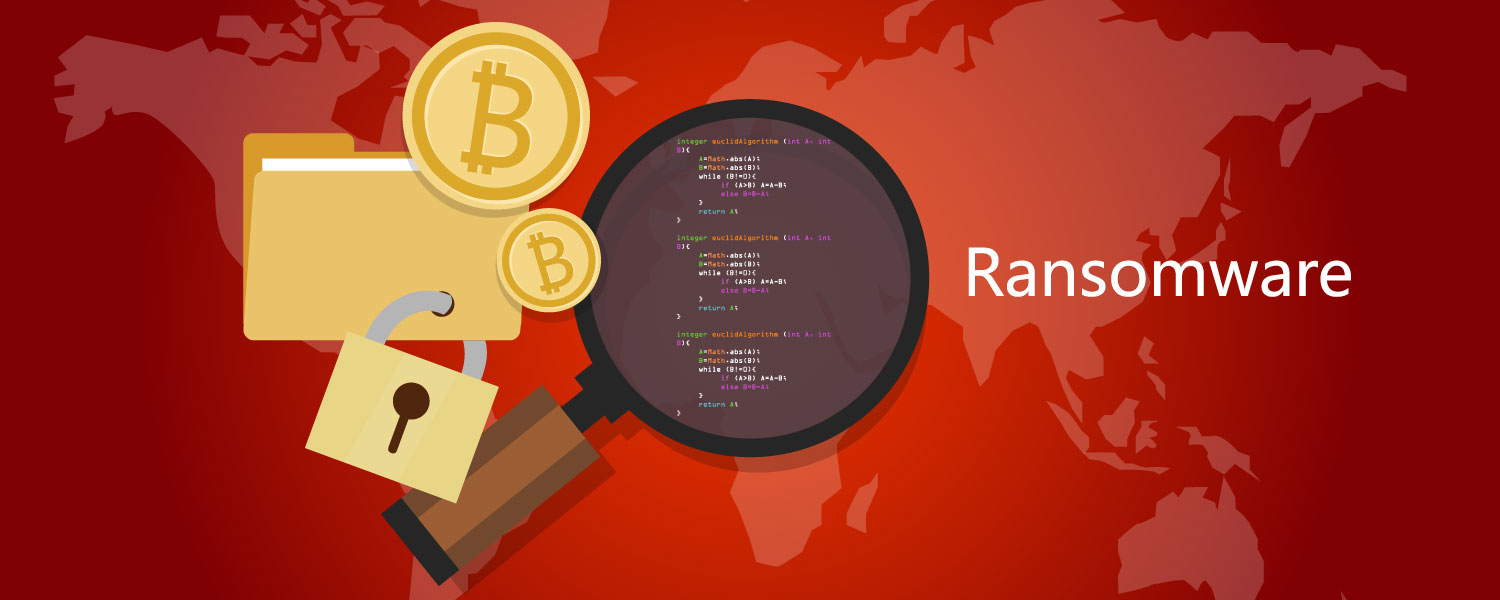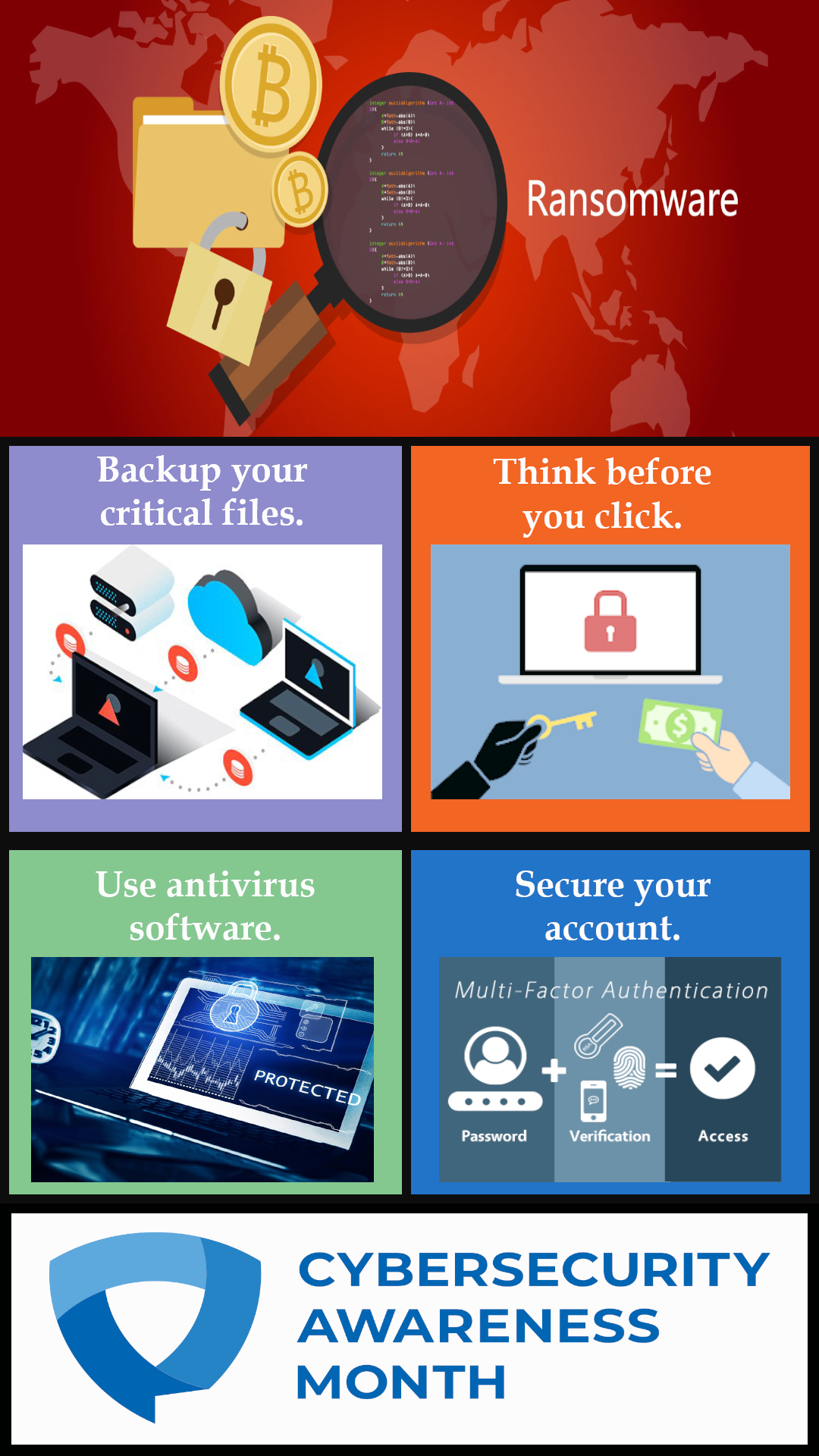Week 4

Topic: Ransomware
Ransomware tricks are never treats. Picture this: You are on the internet browsing websites. Suddenly, your computer screen freezes and a pop-up message appears saying that your personal files have been encrypted and you now must pay a ransom to get them back. All of your files are now inaccessible and you are not sure what to do next. You may have just been hit with ransomware.
Ransomware scams often spread through phishing emails and involve a type of malware (bad software) that infects computers, denies access to files, and encrypts your data. Ransomware scammers then threaten to permanently destroy or publicly publish your personal information unless a payment or ransom is paid.
According to the 2020 Data Breach Investigations Report by Verizon, 80% of malware-related incidents in the education sector involved ransomware. In June 2020, the University of California San Francisco (UCSF) School of Medicine was hit with ransomware that encrypted their servers. A portion of the ransom was paid, costing UCSF approximately $1.14 million.
Avoid the Ransomware Scare
Visit TikTok @SDSUITS to watch a Halloween story (Login with your SDSU ID is required to access this resource).
Tools and Tips
To protect yourself from a potential ransomware attack this Halloween, please follow these recommendations:
- BACK UP CRITICAL FILES. A comprehensive backup strategy mitigates ransomware risks. Cyber security professionals advise following the 3-2-1 Rule. Make three copies of your data, store across two different forms of media (i.e. your computer and an external hard drive or flash drive), and keep one copy off-site. To protect against ransomware, the offsite backup should be isolated from your network/computer (air-gapped). Consider cloud storage as an alternative to replace physical backup media. Also, remember to test your backups periodically. Backups are useless if you can’t access the data or if the data is bad. Further, faculty, staff, and students are encouraged to back up files to their SDSU Google Drive (unlimited cloud storage) account.
- KEEP SOFTWARE UP TO DATE. Whether it’s your computer, smartphone, gaming device, or other network devices, the best defense against viruses and malware is updating the latest version of your apps, web browser, and operating systems. Sign up for automatic updates if you can, and protect your devices with anti-virus software.
- USE ANTIVIRUS SOFTWARE. Avoid malware with an antivirus software. For University-owned devices, please enroll macOS and Windows systems in Microsoft Defender Security Center. Submit a ServiceNow ticket for software support. Note that new SDSU Windows devices can be pre-registered in Microsoft Endpoint Manager at the time of purchase by our preferred retailers, including Dell. SDSU macOS and iOS devices can be pre-registered in Jamf by the SDSU Bookstore. For non-SDSU devices, run an antivirus program daily to pick up any abnormal activity or possibly corrupted/malicious files that need to be quarantined or removed.
- SECURE YOUR ACCOUNT. Use unique and complex passwords for each of your accounts and enable multi-factor authentication (MFA), wherever possible, to ensure that the only person who has access to your accounts is you. Also consider using a password manager to help with generating and managing your passwords.
- THINK BEFORE YOU CLICK. If you receive an email or text with an offer that seems too good to be true or just suspicious, don’t be so quick to click on the link. Do not open or respond to any attachments found in that email, as they may be infected with malware. If the email looks “phishy,” forward it to [email protected].
- PROTECT YOUR DATA. Don’t store sensitive data or SDSU data locally on your devices. This type of data includes social security numbers, banking information, passport numbers and passwords. Please visit SDSU’s Sensitive Data Storage Guidelines.
Resources
Visit the IT Security Office Phishing webpage to see other examples of phishing emails and the 2020 SDSU Cybersecurity Awareness Month website for further information.
In addition, follow ITSO on TikTok @SDSUITS, X (Twitter) @SDSUITSO, and retweet #BeCyberSmart #CyberSecurityAwarenessMonth.
Post It - You are welcome to use the Ransomware Security Awareness poster as shown below:


